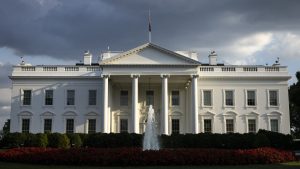It’s back-to-school Monday for the more than 1 million kids in New York City’s public schools, the largest public school system in the country.
Unlike last year, when New York City students had the option to take all of their classes remotely, this school year will be completely in-person and in the classroom, except when kids who test positive for COVID-19 have to quarantine at home.
Of course, back to the classroom this year doesn’t mean back to normal. That’s something educators across the country have known for months.
In June, as COVID-19 cases dropped and the vaccination rate climbed, school superintendent Piera Gravenor was feeling positive about the upcoming school year.
“I was actually quite excited to have a normal, non-eventful year,” Gravenor, superintendent of New Jersey’s Delsea Regional School District, told MarketWatch last month. “What a mistake. I slightly exhaled at the end of last school year.”
Just as school officials were catching their breath from the unprecedented 2020-21 school year, along came rising COVID cases fueled by the delta variant, changing public health guidance and a new state mandate for masks inside all school buildings.
Gravenor and the 200 staffers in her 1,700-student district have already done 15 months of schooling during the pandemic. This year, the plan is to have a completely in-person start to the school year, instead of the all-remote beginning last year that segued into hybrid instruction.
Nevertheless, August 2021 felt a lot like August 2020 for the superintendent.
“What I still find most difficult to deal with is the constant unknowns, the constant uncertainties,” said Gravenor, who’s also the superintendent of Elk Township School District, with kindergarten through sixth graders.

Piera Gravenor, superintendent of Delsea Regional School District & Elk Township School District, front row, center. ‘What I still find most difficult to deal with is the constant unknowns, the constant uncertainties,’ said Gravenor.
Photo courtesy Piera Gravenor
Welcome to the 2021-2022 school year, another master class in pandemic stress.
Mask rules, the role — if any — of staff vaccine requirements, and a labor shortage are some of the plot lines that lie ahead, educators told MarketWatch before the start of the new school year.
To be sure, all sorts of workplaces are wrestling now with these topics. But many employers can tweak return-to-office plans, delay them or stick with remote models. And the adult workforce is eligible for the shot.

Patrick Miller, Greene County Schools, N.C. superintendent. Photo courtesy Patrick Miller
It’s different for schools, where the expectation — from President Joe Biden, to powerful teachers unions and many burnt-out parents — is that approximately 50 million public school kids will be back in classrooms on a full-time, five-day basis. That includes students under age 12 who still aren’t eligible for vaccination. The nation’s economy can’t fully rebound until kids are back in school, freeing up parents to focus on jobs, observers say.
“It could be a more difficult year because numbers are rising here right before we get started and we don’t have the same options that we had last year,” said Patrick Miller, superintendent of Greene County Schools in North Carolina. He anticipates that teachers on staff will be focused on in-person instruction this year and won’t have the capacity to do double duty with remote instruction.
Miller’s district, with 2,800 students and around 460 staffers, plans to contract with an outside vendor that will provide a remote option. Registration for the remote options opened this past summer, and Miller didn’t yet know how many families would go for it when he spoke to MarketWatch in August.
“We’re in better shape today about schooling than we certainly were in March 2020 or in other times” during the pandemic, said Randi Weingarten, president of the American Federation of Teachers with 1.7 million members.
Even with the delta variant’s unknowns, the union supports full-time in-person learning. Still, the degree of difficulty for the new school year could be “even harder,” Weingarten said in August.
“This year is a little bit of déjà vu,” said Christine Pitts, resident policy fellow at the Center on Reinventing Public Education, a non-partisan research organization. “We got to this exact point last year where a lot of districts pulled together the plans they could, based on limited guidance.”
The patchwork of plans will have long-term consequences, Pitts noted. “Regardless of which year it is and what the topic du jour is, the most important thing we can think about is the impact on these students’ safety and their prosperity in the future as individuals.”
To mask, or not to mask
Everyone should be masked inside schools regardless of vaccination status, according to the U.S. Centers for Disease Control and Prevention’s latest guidance.
Now try convincing everyone, from governors to local school board members, to go that route.
States including Arizona, Florida, Iowa, Oklahoma, South Carolina, Texas and Utah say schools cannot require masking. And there’s been legal wrangling against districts that want to put mask mandates in place. Florida Gov. Ron DeSantis recently won a legal victory when a state appeals court put a block against school mask mandates back in place. But federal officials at the Department of Education opened civil rights inquiries into states including Florida, asking whether rules against mandates interfered with students’ abilities to learn.
On the other side, states like New Jersey, Illinois, Washington, Oregon and California are requiring masks for everyone in schools.
Then there are states like North Carolina, where it’s ultimately a local school board decision. Miller’s school board voted 4-1 earlier this month for universal masking, though he thought the end tally would be 3-2.
In New Jersey, the mask mandate is one less decision for Gravenor, but her schools still have to put it into practice. At the end of last year, the district had optional mask rules, she noted.
Though lunch will be outside and spread out as much as possible, the teachers and aides on lunch duty will have to make sure students quickly drop their masks and pop them back up once they’re done eating, Gravenor said. Then there’s figuring out gym classes, where students don’t have to be masked, she noted. “There’s a whole lot more oversight that has to occur,” Gravenor said.
In Park Ridge, Ill., Ken Wallace, the superintendent of Maine Township High School District 207, was planning for optional 2021 mask rules — and that was the message conveyed to the community for a school system with 6,400 kids. Then came Gov. J.B. Pritzker’s Aug. 4 school mask mandate announcement.
So Wallace had to go back to the drawing board for more communication to students and parents, he said.

Ken Wallace, Maine Township High School District 207’s superintendent.
Photo courtesy Ken Wallace
Wallace isn’t anticipating resistance from students when they come back. But he knows he’ll still hear complaints from some parents even if the masking decision is out of his hands.
As of late July, 40% of districts nationwide were requiring masks, 40% were making it optional and 20% had no policy for the new school year one way or another, according a running national survey from the Center on Reinventing Public Education, Pitts said. By early September, 89% of the districts in the survey required masking for some or all of their students, the survey found. The participants are 100 mostly urban school districts across the country, Pitts noted.
Vaccination policies
Employer vaccination mandates are becoming increasingly common, but the question is whether mandates will extend into school districts. That’s happening in New York City, for example. Though teachers once had the choice between regular testing or getting their shots, teachers no longer have the testing option.
President Joe Biden has stepped into the fray, announcing that he’ll be directing federal labor officials to come up with rules requiring private sector employers with at least 100 workers to require either vaccination or regular testing. He called on governors to require teachers in their states be vaccinated. Biden is also be requiring staff at federally-run education offerings, such as Head Start programs and Defense Department-operated schools to be vaccinated.
In August, Weingarten told NBC News she supported vaccine mandates for teachers after telling MarketWatch days earlier that she was giving the prospect serious thought.
Approximately 90% of educators and school staff across the country are already vaccinated, according to White House estimates.
Washington D.C. said in August that all district employees — including teachers — would either need to be vaccinated by Sept. 19 or undergo regular testing. “We want our families to understand that our doors will be open on August 30, and we expect to have all of our students present, in-person, full-time, five days a week,” D.C. Public Schools Chancellor Lewis Ferebee said.
Around 90% of the school system’s staff said in voluntary reporting that they are vaccinated, Ferebee noted. The Washington D.C. announcement followed New York City’s requirement for city workers, including Department of Education staff, to either show proof of vaccination or undergo regular testing. (New York City teachers are now required to be vaccinated, with a few exceptions.)
But different districts have different dynamics.
None of the three superintendents MarketWatch interviewed said they were considering vaccine mandates. As of earlier this summer, the teaching staff in Wallace’s Illinois district had a 92% vaccination rate (and an 82% for all staffers). The rate was likely even higher as of August, Wallace said.
In New Jersey, Gravenor said the “vast majority” of staff had been vaccinated. Nevertheless, she was scheduled to meet with the district’s lawyer to learn more about the laws and regulations surrounding what she could and could not ask staff and students when it comes to vaccination status.
As for a mandate? Gravenor wishes everyone had their shots, but a requirement is a bridge too far. “I don’t morally feel comfortable doing that,” she said.
Likewise, Miller said requirements in Greene County Schools, N.C. “will not happen at a local level here,” Miller said. “If a state mandate came down, we would have to adhere to that.”
Miller’s district hasn’t asked staff to report vaccination status. As a whole, the county’s vaccination rate was “pretty pathetic,” he said.
Just over half (53%) of the county’s adult population had at least one shot and 49% was fully vaccinated as of Aug. 10, according to the North Carolina Department of Health and Human Services.
‘We literally are begging people to be bus drivers’
Wallace’s district has around 16 or 17 openings for teacher’s assistants and support staff — plus a bit of bad news that the bus company contracted to bring students to after-school games can’t do it because the company’s staff is stretched thin.
Gravenor has similar problems in New Jersey. “We literally are begging people to be bus drivers,” she said, later adding, “I cannot find, for the life of me, substitutes.”
In North Carolina, Miller, as of August, was waiting for applications to six spots clustered in the middle school. “It’s been a while since we’ve had this many vacancies at the beginning of the school year,” said Miller, the superintendent since 2008.
What gives? The skimpy supply of workers overall at this point in the pandemic is colliding with an ongoing staff shortage in education — which has been already aggravated by a stressful 2020-2021 school year.
Employment in public schools increased 221,000 in July and 40,000 in private schools, according to the Bureau of Labor Statistics’ recent jobs report. Those job additions surpass the numbers in May and June.
In May, there were 334,000 openings in state and local education, the agency said. That preliminary data is the highest number of openings since BLS started counting them in 2000.
Anecdotally, Wallace said some people nearing the end of their career seemed to just be retiring instead of eking out a little more time on the job. Around Gravenor’s district, she noted many substitute teachers tended to be stay-at-home mothers or retirees and the pull into the classroom might not be enough under the circumstances.
Nearly one in four teachers were considering leaving at the end of last year, a recent RAND Corporation survey found. That’s up from one in six, researchers noted.
“Even outside of COVID, we were having issues with the teaching pipeline being a trickle,” Miller said. “Then COVID has just exacerbated that.”
All three superintendents said they’ll find some way to fill openings or juggle operations with a slimmer staff.
Wallace just hopes this is a relative blip. “I’m trying to be optimistic and hope it’s a short-term problem.”
This story was first published on Aug. 11 and updated on Sept. 13.
This post was originally published on Market Watch






